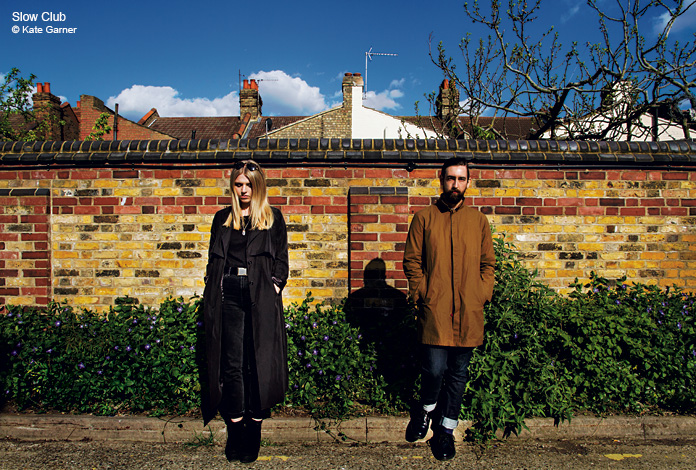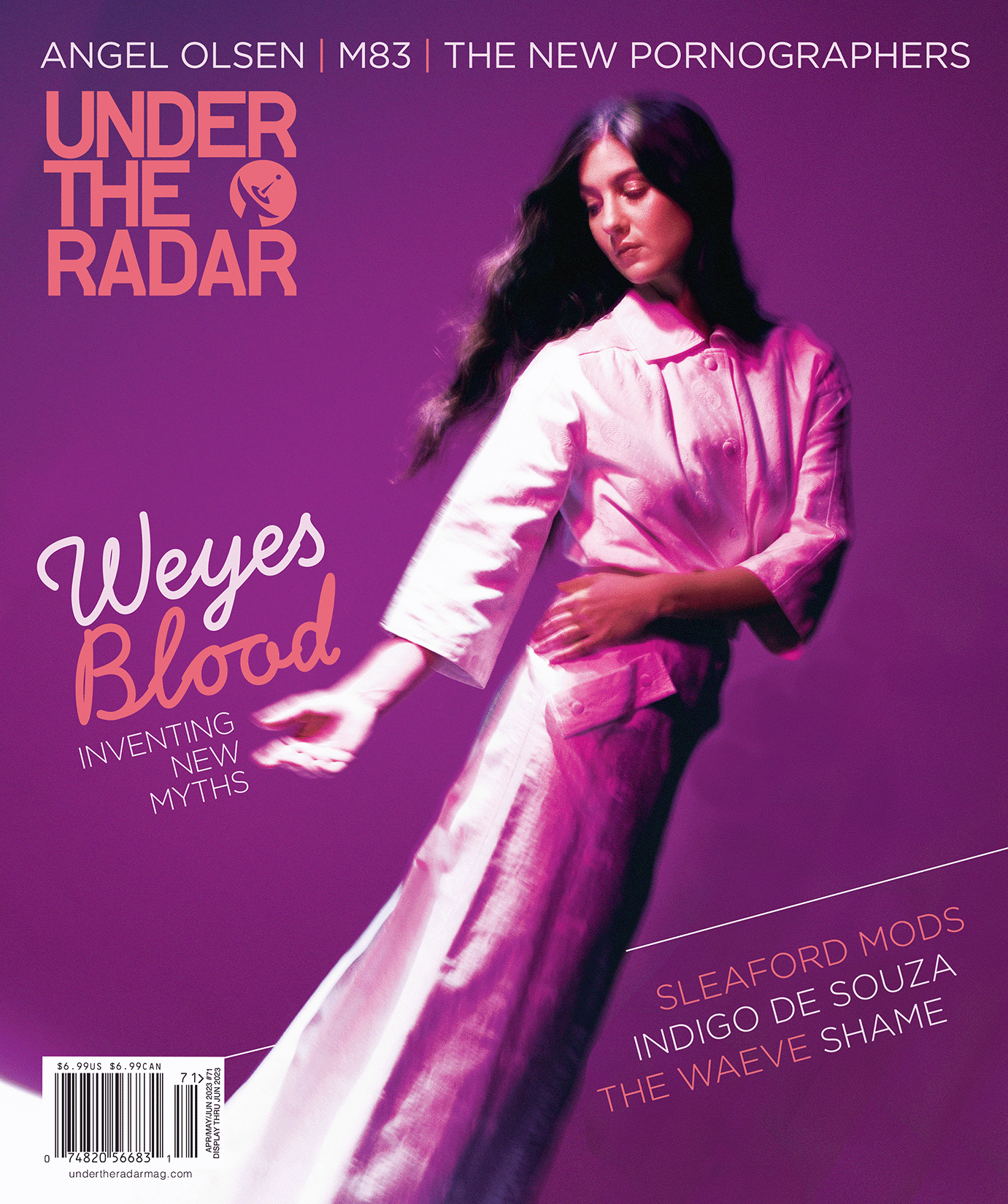
Slow Club on the Less-Is-More Philosophy of “Complete Surrender”
From the Ground Up
Jul 14, 2014
Photography by Kate Garner
Issue #50 - June/July 2014 - Future Islands
![]()
Slow Club‘s Charles Watson tells a story about the British band’s 2009 American tour with Norwegian synthpop band Casiokids, explaining how he and co-leader Rebecca Taylor would stand at the side of the stage and marvel at how the audience would dance in unison during their tourmates’ set, as if surrendering themselves to the music. Slow Club’s brand of ethereal, often-austere indie pop had earned critical plaudits and loyal listeners, but it didn’t have this kind of power to move people physically. It wasn’t until a few years later, while the band was touring 2011 sophomore album, Paradise, that Watson and Taylor saw a comparable reaction to one of their own compositions, a work-in-progress track entitled “Not Mine to Love.” A soulful torch song with a massive sing-along chorus, it would end up becoming the seed of Slow Club’s third full-length release, Complete Surrender.
“Every time we played it, it seemed to go down really well and people understood it and responded to it,” Taylor says. “And that’s the most simple song we’ve got. It’s very straightforward and classic, and I kept thinking, ‘I wonder if we did a whole record like that, would it work?’ And I said, ‘I think we should do this,’ and Charles was literally like, ‘I think we should do this, too.’ So it was like, ‘Well, brilliant. That was easy.’”
Keeping everything easy became a sort of mantra, and a new less-is-more philosophy took hold. This is not how it has always been, they admit. In the past, they had labored to deliberately obfuscate their arrangements, as if barricading themselves inside the complexity of their own songs. (“I spent the whole time saying, ‘It needs to sound weird! It needs to sound fucked up!’” Taylor says of making the second album.) By the time they set up camp for a week of writing in a rented bungalow in the western countryside in England, they had given themselves over to this newly concise form of songwriting so thoroughly that they barely recognized themselves.
“One night we put both [previous] records on just to see how we felt about them, and it was a huge learning curve,” Watson says. “We were like, ‘Why the fuck did we put that verse in? Why did we put another verse in?’ But when we were 16, 17 we just had so much to say that could have been condensed into one incredible verse, as opposed to four or five. It might not feel like that to other people, but when we listen to it, it’s like, ‘Yeah, this should be finishing right now,’ and it just goes on for another two minutes! That was a thing we tried to do to—to streamline things and make it have more impact quicker.”
With producer Colin Elliot helping them prune away every unnecessary embellishment, the duo ended up with a lean, 11-song set that drifts through economical R&B grooves, brassy soul-pop flourishes, and unadorned balladry, making nods to leftfield dance music along the way. But as strikingly direct as the hooks and arrangements are, even more surprising are the performances, with Watson delivering his most earnest melodies and Taylor belting out her vocals with a previously unexplored expressiveness. If intellectual distance and a detached stance make for hip songwriting, Complete Surrender is a deeply unhip album.
“I can’t be cool,” Taylor says with a laugh. “I can’t be quiet. I can’t be reserved in any way. I’ve tried my whole life to be cooler and be more aloof, and it’s the same for my vocals. I could try to keep it all inside, and maybe that would sound cooler, but I just can’t. Whatever is going to come out of me is what you’re going to get. I don’t know if that’s half my problem in life,” she says, “but it’s too late to change it now.”
[Note: This article first appeared in Under the Radar’s June/July print issue (Issue 50).]
Most Recent
- Premiere: Mia Day Shares New Single “Mountain Song” (News) — Mia Day
- Tallinn Music Week, Tallinn, Estonia, April 3-7, 2024 (Review) — Virta, Musta Huone, Mari Kalkun, Sven Grünberg
- Picnic at Hanging Rock [4K UHD] (Review) —
- Joe Goddard of Hot Chip Announces New Album, Shares Video for New Song “Moments Die” (Feat. Barrie) (News) — Joe Goddard, Hot Chip
- Premiere: O Slow Shares New EP ‘Every Time I Look In The Mirror’ (News) — O Slow


Comments
Submit your comment
There are no comments for this entry yet.